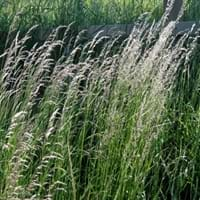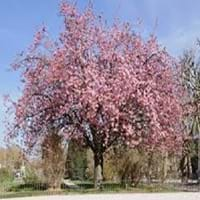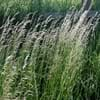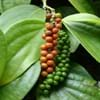Life Span
Perennial
Perennial
Origin
Europe, Asia
China, Japan, Korea
Types
Blue Oat grass
Amanogawa , Shirotae , Shogetsu
Number of Varieties
Not Available
Habitat
Cropland, gardens, Grassland, Roadsides
Woodlands
USDA Hardiness Zone
4-9
6-8
AHS Heat Zone
Not Available
9-4
Sunset Zone
1a, 1b, 2a, 2b, 3a, 3b, 4, 5, 6, 7, 15, 16, 17, 23, 24
2b, 3a, 3b, 4, 5, 6, 7, 12, 14, 15, 16, 17, 18, 19, 20
Habit
Clump-Forming
Arching/Fountain-shaped
Flower Color Modifier
Bicolor
Bicolor
Fruit Color
Brown
Not Available
Leaf Color in Spring
Gray Green
Green, Plum
Leaf Color in Summer
Light Green
Green
Leaf Color in Fall
Dark Green
Gold, Orange Red
Leaf Color in Winter
Tan, Brown
Not Available
Leaf Shape
Grass like
Pinnate
Plant Season
Not Available
Spring, Fall
Sunlight
Full Sun, Partial Sun
Full Sun, Partial Sun
Growth Rate
Medium
Medium
Type of Soil
Loam
Clay, Loam, Sand
The pH of Soil
Acidic, Neutral
Acidic, Neutral
Soil Drainage
Average
Well drained
Bloom Time
Early Summer
Early Spring
Tolerances
Drought
Not Available
Where to Plant?
Ground
Ground
How to Plant?
Seedlings
Grafting, Stem Cutting
Plant Maintenance
Medium
High
Watering Requirements
Does not require lot of watering, Water occasionally
Keep the ground moist but not water-logged
In Summer
Lots of watering
Lots of watering
In Spring
Moderate
Moderate
In Winter
Average Water
Average Water
Soil pH
Acidic, Neutral
Acidic, Neutral
Soil Type
Loam
Clay, Loam, Sand
Soil Drainage Capacity
Average
Well drained
Sun Exposure
Full Sun, Partial Sun
Full Sun, Partial Sun
Pruning
Remove damaged leaves, Remove dead branches, Remove dead leaves
prune to control shape, Remove damaged leaves, Remove dead branches, Remove dead leaves
Fertilizers
All-Purpose Liquid Fertilizer
All-Purpose Liquid Fertilizer, slow-release fertilizers
Pests and Diseases
Red blotch
Aphids, Bacterial leaf spot, Borers, Caterpillars, Scale insects, Spider mites
Plant Tolerance
Drought
Drought
Flowers
Not Available
Showy
Flower Petal Number
Single
Double
Foliage Texture
Not Available
Medium
Foliage Sheen
Matte
Glossy
Attracts
Not Available
Aphids, Birds, Not Available
Allergy
Asthma, Itchy eyes
Unknown
Aesthetic Uses
Not Used For Aesthetic Purpose
along a porch, deck or patio, Beautification, Cottage Garden, Wild gardens
Beauty Benefits
Not Available
Not Available
Environmental Uses
Air purification
Air purification
Medicinal Uses
Arthritis, Headache, Stomach pain
anti viral, Anti-oxidant
Part of Plant Used
Whole plant
Bark
Other Uses
Used as a nutritious food item
Grown for shade, Traditional medicine, Used for fragrance
Used As Indoor Plant
No
No
Used As Outdoor Plant
Yes
Yes
Garden Design
Bedding Plant, Feature Plant, Groundcover
Feature Plant, Shade Trees, Street Trees
Botanical Name
ARRHENATHERUM
PRUNUS serrulata 'Kwanzan'
Common Name
Oatgrass
Kwanzan Cherry
In Hindi
जई घास
Kwanzan Cherry
In German
Ährengras
Kwanzan Cherry
In French
Folle avoine
Kwanzan Cherry
In Spanish
oat Grass
Kwanzan Cherry
In Greek
βρώμη Grass
Kwanzan Cherry
In Portuguese
aveia-
Árvore de cereja
In Polish
Owies trawa
Wiśnia drzewa
In Latin
oat Grass
Kwanzan Cherry
Phylum
Not Available
Angiosperms
Class
Liliopsida
Magnoliopsida
Clade
Angiosperms, Commelinids, Monocots
Eudicots
Tribe
Aveneae
Not Available
Subfamily
Danthonioideae
Not Available
Number of Species
Not Available
Properties of Oatgrass and Kwanzan Cherry
Wondering what are the properties of Oatgrass and Kwanzan Cherry? We provide you with everything About Oatgrass and Kwanzan Cherry. Oatgrass doesn't have thorns and Kwanzan Cherry doesn't have thorns. Also Oatgrass does not have fragrant flowers. Oatgrass has allergic reactions like Asthma and Itchy eyes and Kwanzan Cherry has allergic reactions like Asthma and Itchy eyes. Compare all the properties and characteristics of these two plants. Find out which of these plant can be used as indoor plant. If you are interested to decorate your house and garden, find out aesthetic uses, compare them and select the plant which will beautify your surrounding. Along with beautification, try comparing medicinal and edible uses of Oatgrass and Kwanzan Cherry and you can choose the plant having best and most benefits.
Season and Care of Oatgrass and Kwanzan Cherry
Season and care of Oatgrass and Kwanzan Cherry is important to know. While considering everything about Oatgrass and Kwanzan Cherry Care, growing season is an essential factor. Oatgrass season is Not Available and Kwanzan Cherry season is Not Available. The type of soil for Oatgrass is Loam and for Kwanzan Cherry is Clay, Loam, Sand while the PH of soil for Oatgrass is Acidic, Neutral and for Kwanzan Cherry is Acidic, Neutral.
Oatgrass and Kwanzan Cherry Physical Information
Oatgrass and Kwanzan Cherry physical information is very important for comparison. Oatgrass height is 20.50 cm and width 30.50 cm whereas Kwanzan Cherry height is 460.00 cm and width 460.00 cm. The color specification of Oatgrass and Kwanzan Cherry are as follows:
Oatgrass flower color: Brown
Oatgrass leaf color: Gray Green
Kwanzan Cherry flower color: Pink
- Kwanzan Cherry leaf color: Green and Plum
Care of Oatgrass and Kwanzan Cherry
Care of Oatgrass and Kwanzan Cherry include pruning, fertilizers, watering etc. Oatgrass pruning is done Remove damaged leaves, Remove dead branches and Remove dead leaves and Kwanzan Cherry pruning is done prune to control shape, Remove damaged leaves, Remove dead branches and Remove dead leaves. In summer Oatgrass needs Lots of watering and in winter, it needs Average Water. Whereas, in summer Kwanzan Cherry needs Lots of watering and in winter, it needs Average Water.





